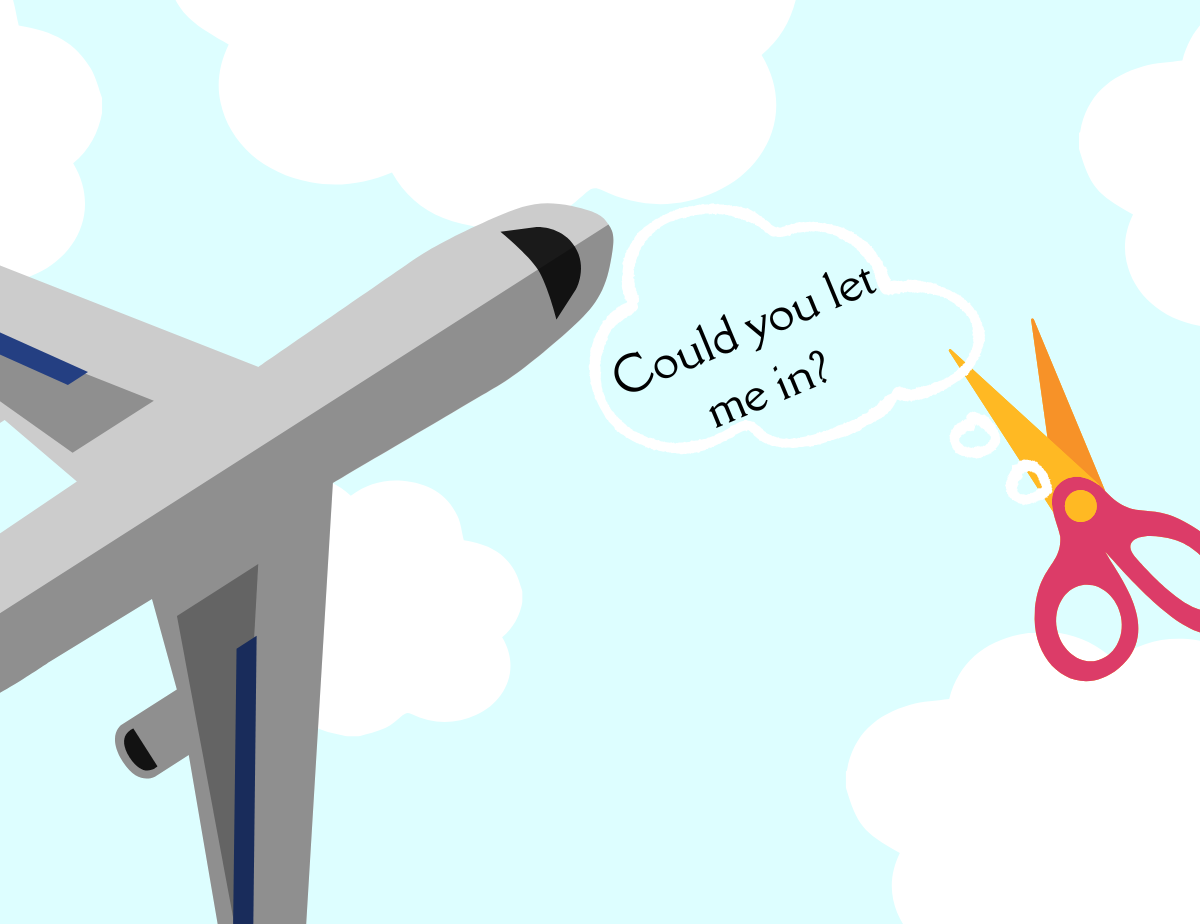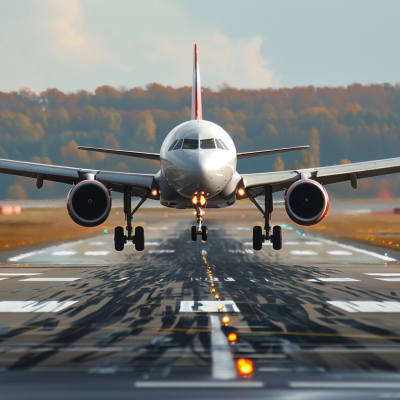Have you ever been packing for a flight and wondered, “Can I bring my scissors in my carry-on bag?” With all the rules and regulations around what items are allowed on airplanes these days, it’s an understandable question.
Getting through airport security with prohibited items can cause headaches, delays, and possibly fines.
The good news is that, yes, you generally can bring scissors on a plane, with some important caveats. The Transportation Security Administration (TSA) allows certain types and sizes of scissors to be carried on board aircraft in your carry-on baggage.
In this article, we’ll cover TSA guidelines around traveling with scissors, including what kinds are permitted, length and blade size rules, exceptions for medical scissors, and tips like wrapping sharp tips for safety.
By the end, you’ll understand TSA requirements for scissors so you can confidently pack them for your next flight worry-free. Let’s clip into it!
TSA Guidelines for Scissors in Carry-On Bags
To ensure travel safety, the Transport Security Administration (TSA) has specific regulations regarding scissors in carry-on bags.
Let’s understand these rules that can help ensure your security screening goes smoothly.
Blade Length Regulations
Blade length is the central factor determining if scissors are allowed in your carry-on bag. According to TSA rules, scissors with blades shorter than 4 inches measured from the pivot point can go in carry-ons. Any blades longer than 4 inches, however, are prohibited. So, if you want to pack scissors in your carry-on, measure them first to confirm compliance.
You can pack scissors with longer blades in checked baggage without issue. But keeping them in your carry-on could mean surrendering them at the checkpoint if they violate the size regulations.
TSA officers have leeway to prohibit any blades they consider dangerous, even under 4 inches. So aim for a conservative size just to be safe.
Scissor Design and Features
Along with blade length, certain design elements and features may impact whether TSA permits scissors in carry-ons. For example, scissors with sharp points or made from tactical/combat materials are more likely to face restrictions or extra examination. However, children’s safety scissors with embedded blade covers are consistently permitted.
The number of blades is also usually not a factor. Both standard two-blade scissors and multi-blade designs like sewing scissors can go in carry-ons, assuming they meet length rules and lack dangerous features.
Just remember that regulations ultimately depend on the judgment of TSA personnel. So measure your scissors before packing and cooperate fully at the checkpoint. Following TSA guidance helps keep everyone safe while traveling.
Packing Scissors for Airport Security
When packing scissors to take through airport security, it’s important to be ready and careful about how you do it.
- First, ensure your scissors adhere to TSA guidelines – blade edges should be less than 4 inches from the pivot point. You’ll want to pack them securely so they don’t risk injury to you or TSA agents.
- The best practice is to place your scissors in a clear plastic quart-size bag and position them neatly inside your carry-on where they are visible. TSA agents can quickly identify the item when screening your bag in the x-ray machine.
- When you place your bag on the conveyor belt, you can inform the agent that you have scissors packed visibly in a plastic bag. This helps them locate the item and signals you have proactively prepared for the inspection.
- A protective cover or sheath for your scissors is recommended as an additional measure. This helps prevent accidental cuts from loose items coming into contact with an open blade edge. Just be sure the sheath itself does not violate prohibited item standards.
- When you reach the carry-on x-ray screening, remove your clear quart bag with the scissors inside and place it in a bin. Calmly inform the agent that you have prepared the scissors for quick screening. This demonstrates that you respect the process and have everything organized to help make their job easier.
Scissors on International Flights
When packing your bags for international flights, look up the rules for each country you visit. This is especially important for things like scissors and other items that might be restricted.
- The TSA allows scissors with blades up to 4 inches in carry-on baggage on U.S. flights. However, the European Union has different standards – limiting blade length to just 6 cm (or about 2.36 inches) for carry-on bags.
- This discrepancy highlights why travelers should verify rules before packing.
- Other prohibited items can also vary. Making assumptions based on one country’s policies can lead to problems at security checkpoints.
- Scissors over the limit would require being stored in checked baggage.
- Uninformed travelers may have to surrender items or pay to check bags.
- Knowing precise restrictions for every destination prevents headaches.
- With some advanced research, you can ensure a smooth journey with all belongings easily permitted onboard your flights.
Checking each country’s official guidance will equip you to transport necessities legally and conveniently through varying international security standards.
What If My Scissors Are Confiscated?
If your scissors are confiscated at airport security, you have a couple of options to get a pair before your trip. You can purchase a new TSA-compliant pair at one of the airport shops after going through security. Make sure to budget a little extra for this potential expense. Alternatively, you can request to borrow a pair of scissors from your hotel once you arrive at your destination.
Or else, simply call the front desk to ask if they can provide a pair of scissors for guest use. In the future, opt for TSA-compliant scissors before heading to the airport to avoid confiscation altogether. Look for pairs less than 4 inches long when closed to improve your chances of getting them through security without issue. A little proactivity goes a long way to ensure you have scissors handy for all your travel needs.
Tips for Travelling with Scissors
Let’s explore some of the best tips with scissors while traveling.
- Traveling by air with scissors can be allowed, but there are some tips to follow to comply with TSA guidelines. First, check the latest rules on the TSA website before packing sharp tools like scissors.
- As of this writing, scissors with blades 4 inches or shorter are permitted in carry-on baggage. Any longer blades need to be placed in checked bags.
- Have a protective cover handy for the tips of your scissors to prevent injuries when packed among other belongings.
- Consider picking up a pair of travel-sized or folding craft scissors with short, blunted blades under the permitted size. They take up little room in a toiletry kit or handbag while still functional for basic paper crafting.
- Retractable box cutter knives are another portable option if you only need to cut paper, vinyl, or light materials occasionally.
- When going through airport security screening, have scissors easily accessible in their sheath or a clear plastic baggie. Be prepared to remove them from your carry-on bag and place them in a bin for the X-ray machine to prevent any delays or issues during screening.
Conclusion
Ultimately, you can conclude that it is possible to travel with scissors if you prepare properly and comply with TSA guidelines.
The most important things to remember are to pack scissors correctly, know which ones are prohibited, and follow security rules at the airport.
However, you can successfully bring scissors on an airplane by knowing which scissors are allowed, packing them properly, and willingly complying with security rules.
This small effort enables you to travel with an important tool and avoid confiscated items, extra screening, delays, or penalties for attempting to sneak prohibited items onto flights.
Have a smooth journey ahead!






